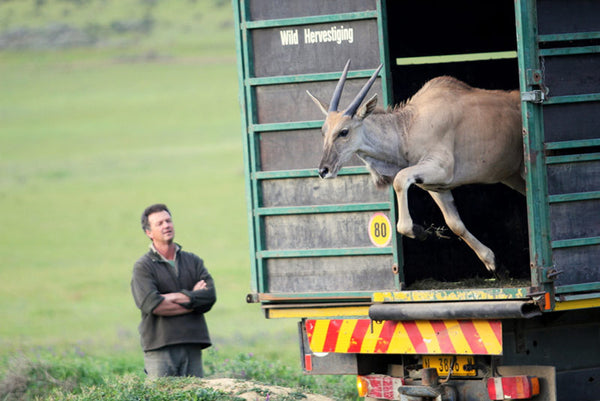
Meet the New Wildlife at De Grendel
Share
De Grendel has had some beautiful new arrivals... New to the estate is a herd of eland. We've been waiting for months to them arrive, and finally the permit and all the logistics we needed were sorted and we welcomed them to the slopes of the Tygerberg Hills. These beasts used to roam freely in the area, and now De Grendel is reintroducing them, along with bontebok, and soon red hartebeest.
Eland were once on the verge of extinction because of excessive hunting for their meat. Fortunately, their numbers have increased significantly since they were made a protected species.
Bontebok were also once extensively killed as pests, reduced to a wild population of just 17 animals. Thankfully the species has since recovered too.

Rob Slater, the stud manager at De Grendel, is in charge of looking after all the cattle on the farm, which has come to include these wonderful additions of wildlife. He shares with us his experience on the farm, and what it entailed settling the eland in.
Where are the new animals from?
The Eland are from Villiera Wine farm near Stellenbosch. The Springbok belong to our cellarmaster, Charles Hopkins - they are not indigenous to the area and are only here temporarily. We also have seven Bontebok and we are expecting one of them to lamb in the next two weeks.
How old are they, and what are their genders?
We have one big bull Eland and two young bulls, one big cow and two young Eland cows. We are still waiting for the delivery of the others, and then there will be a total of 15 Eland on the farm.

Why did the new buck come to De Grendel?
Sir De Villiers Graaff is looking at reintroducing indigenous game to the Tygerberg Hill and slopes that form part of De Grendel. We are also getting seven Red Hartebeest and another 10 or so Bontebok in the near future.
How are they settling in and fitting in with the other animals?
The big Eland bull is patrolling the boundary fence a lot, which he will get used to hopefully. Otherwise all seems settled and happy. Eland are quite peaceful.
How do you tend to them?
Their water trough gets checked daily, they get counted regularly and their coats are checked from afar with binoculars for any changes that could relate to parasites or nutritional problems.
What were the biggest challenges getting them to De Grendel?
The time it took to get through all of the red tape! But we wanted to do it properly and legally, so our patience was eventually rewarded.
What are the biggest challenges facing them now?
They have to get used to all of the different noises from the city, which includes aircraft flying over us all the time. Plus they have to get used to the new fencing, the boundaries and the new habitat.
What is in store for them in the future?
The possibility of roaming almost the entire Southern slope of the Tygerberg Hill when phase two of the game section happens, which is the aim.
